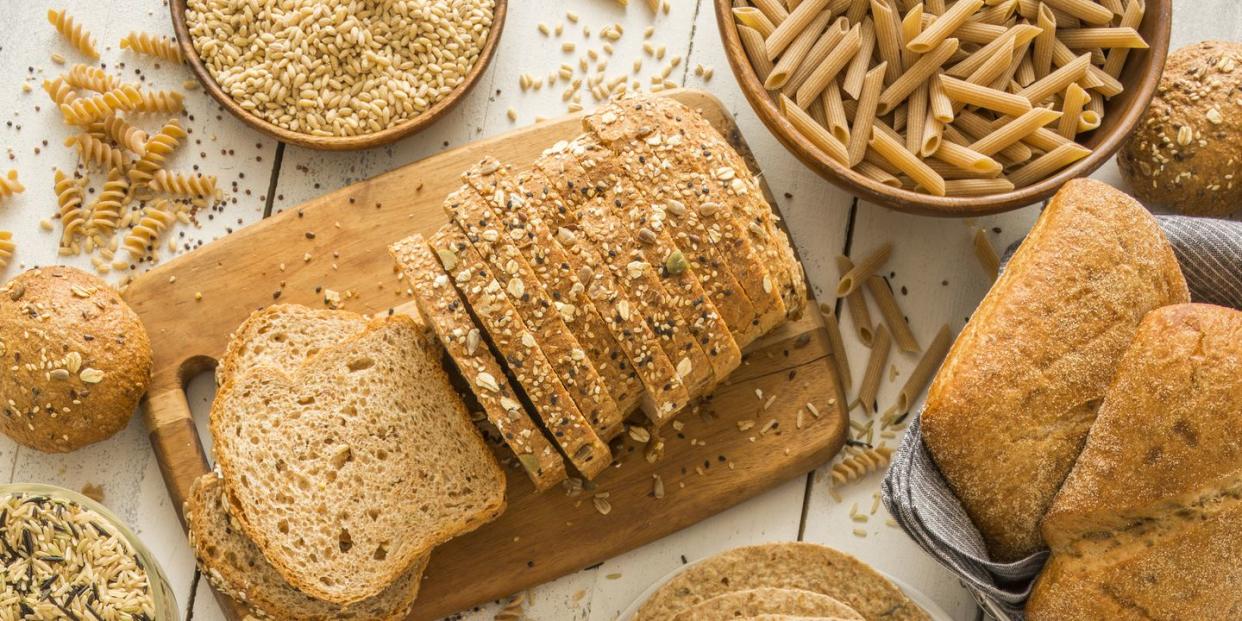This Study Says the Labels on Your Whole Grain Foods Packaging Are Among the Most Misleading

Whole grain labels on cereal, bread, and crackers are so confusing or misleading that people may read them wrong up to half of the time, according to a new study published in Public Health Nutrition.
Out of 1,030 participants, 51 percent overestimated the amount of whole grains in sample 12-grain bread products and 41 percent overestimated the whole grain count in multigrain crackers.
The researchers from Tufts University and New York University say the results provide legal evidence for changes in labeling regulations.
As cyclists (and humans), health experts always tell us to eat more whole grains. Not only do these healthy carbs fuel our rides, but a diet rich in whole grain foods is also associated with a significantly lower risk of most chronic diseases and early death.
The USDA recommends most adults eat at least three servings (more if you’re very active) of grain-based foods a day. A serving is about one slice of bread, one cup of cold cereal, or one half cup of cooked rice, pasta, or cooked cereal. At least half your daily grain servings should be from whole grains.
[Download the All Out Studio App for more amazing at-home workouts!]
The problem is that the labels on food packaging can be so confusing—and often misleading—that even the most well-intentioned consumer can easily end up choosing a less-healthy product without knowing it, according to a study by researchers from New York University (NYU) and Tufts University.
In the study, a group of 1,030 adults were shown photos of both hypothetical products meant to mimic real products on the market, as well as actual products.
The photos showed cereal, crackers, and bread, with various whole grain labeling on the front of the package, along with the nutrition facts label and ingredients list for each product. The participants were asked to identify the healthier option with regards to whole grains for the hypothetical products and assess the whole grain content for the real products.
The packages on the hypothetical products either had no front-of-package label or were marked with “multigrain,” “made with whole grains,” or a whole grain stamp. The packages on the real products displayed the actual product markings, including “multigrain,” “honey wheat,” and “12 grain.”
When selecting the healthiest hypothetical products, 29 to 47 percent of the respondents answered incorrectly, with 31 percent choosing incorrectly for cereal, 29 to 37 percent for crackers, and 47 percent for bread.
They didn’t fare much better when asked to assess the whole grain content of real products. Forty-one percent overstated the whole grain content for multigrain crackers, 43 percent overstated the whole grains in honey wheat bread, and 51 percent overestimated the whole grains in 12-grain bread.
The participants guessed best when it came to assessing the whole grain content in oat cereal, which was actually mostly composed of whole grain.
“Our study results show that many consumers cannot correctly identify the amount of whole grains or select a healthier whole grain product,” said first author Parke Wilde, Ph.D., a food economist and professor at the Friedman School of Nutrition Science and Policy at Tufts University said in a press release. “Manufacturers have many ways to persuade you that a product has whole grain even if it doesn’t. They can tell you it’s multigrain or they can color it brown, but those signals do not really indicate the whole grain content.”
The study aimed to assess whether consumer misunderstanding of the labels meets a legal standard for enhanced U.S. labeling requirements for whole grain products. If the labels are deceptive or misleading, public health professionals can push for stronger regulations.
“With the results of this study, we have a strong legal argument that whole grain labels are misleading,” coauthor Jennifer L. Pomeranz, M.P.H., assistant professor of public health policy and management at NYU School of Global Public Health, said in the release. “I would say when it comes to deceptive labels, ‘whole grain’ claims are among the worst. Even people with advanced degrees cannot figure out how much whole grain is in these products.”
Most people don’t get enough high-quality carbs in their diet, which are important to fuel your rides and other workouts.
“A large chunk of Americans’ daily calories—42 percent—comes from low quality carbohydrates. Consuming more whole grains can help change that, but the policy challenge is to provide consumers with clear labels in order to make those healthier choices,” co-senior author Fang Fang Zhang, Ph.D., nutrition epidemiologist at the Friedman School, said in the release.
You can steer clear of food label confusion by looking at the ingredients list, Wilde told Runner’s World, which is ordered from highest to lowest amounts in the package. Additionally, he suggests seeking out products where the first grain ingredient explicitly says whole grain, such as “whole wheat flour” or “brown rice,” since consumers can be tricked by a grain product’s brown coloring or labels such as “multigrain,” “12-grain,” “enriched,” or “contains whole grain,” all of which are permitted on products that are mostly refined grains.
You Might Also Like

